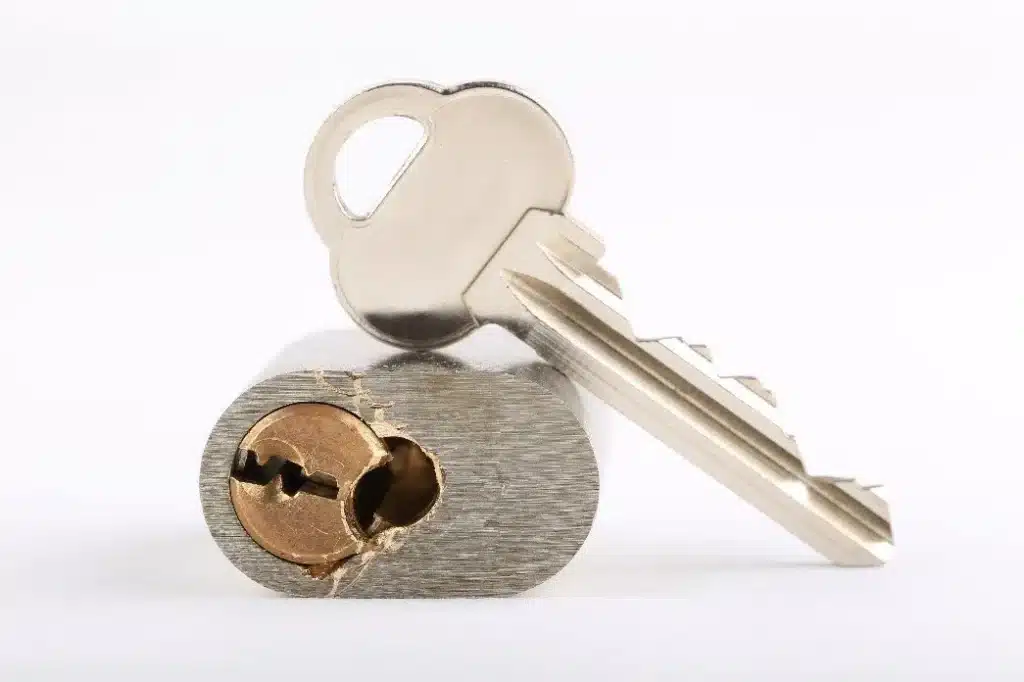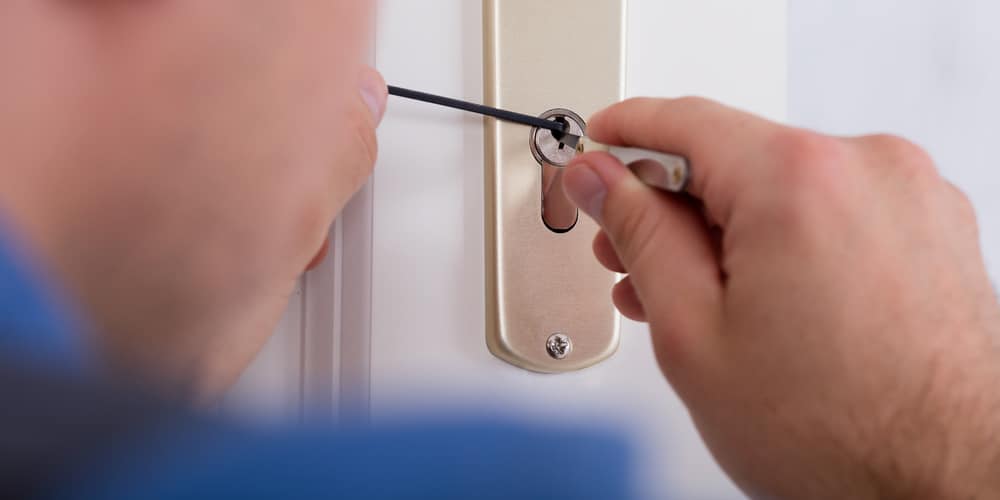Introduction
How To Use A Cylinder Lock: Cylinder locks are a common and dependable security solution found in homes, businesses, and various other establishments around the world. Their popularity stems from their durability, ease of use, and the high level of security they provide. Whether you’re a homeowner looking to secure your property or a business owner seeking to protect your assets. Knowing how to use a cylinder lock effectively is essential. In this guide, we will explore the fundamentals of cylinder lock operation. Offering step-by-step instructions and tips to help you maximize the security of your space.
By the end, you’ll have a clear understanding of how to use a cylinder lock to safeguard your property and maintain peace of mind. Cylinder lock code are a ubiquitous feature in the world of security. serving as reliable protectors of our homes, offices, and possessions. These locks are renowned for their versatility, combining strength, convenience, and adaptability to suit a wide range of security needs.
A security system can help if you want to keep your family and property safe or if you own a business and want to protect important items. Know how to use a cylinder lock well is very important. This guide explains how cylinder locks work and how to use them in great depth. Giving you detailed information and useful tips to make sure you can use these locks to their full potential.

How does a cylinder lock works?
Cylindrical locks are designed so that only one key can rotate them; this rotation thus locks or unlocks the door. Inside a cylinder, there are numerous sets of pins, along a barrel. Each pin is a different height, and each set of pins rests in a cylindrical void.
Cylinder: This is the central part of the lock, housing the keyway and the locking mechanism. It is usually a cylindrical metal casing.
Keyway: The keyway is a narrow slot or channel within the cylinder, into which the key is inserted.
Key: The key is the external component that interacts with the lock. It is uniquely designed to match the lock’s internal mechanisms.
Pins: A bunch of pins are set up in pairs inside the cylinder. When there is no key in the lock, these pins stop the cylinder from turning.
Springs: Springs are positioned beneath the pins, pushing them downwards into the keyway.
Is cylinder lock safe?
Cylinder Locks
While these types of locks are ideal aesthetically because they can sit flush with a door and take up little in the way of room. These types of locks are, unfortunately, some of the least secure.
The quality and form of a cylinder lock have a lot to do with how safe it is. High-quality cylinder locks, which are often made by reliable companies, are designed to be hard to break into and pick. Most of the time, the keys to these locks are cut very precisely, and the pins are set up in a complicated way. This makes them more secure against illegal entry.
The amount of pins inside the cylinder of the lock is a key part of how safe it is. Locks with more pins are usually safer because they need a key with specific holes to line up all the pins at the shear line. This makes it harder to pick them or bump them open.
Key control is also important to the safety of a cylinder lock. Reputable lock makers keep tight control over key duplication. making sure that only people with the right permission can make copies. This makes it less likely that duplicate keys will get into the wrong hands.
What does 3 stars on a lock mean?
A 3-star Sold Secure Diamond rating, means a cylinder/lock has been tested above and beyond the usual standards required for TS007. and has also been tested by the Master Locksmiths Association.
Enhanced Security: A 3-star rated lock provides a higher level of security compared to lower-rated locks. It offers better protection against forced entry methods like lock snapping, picking, and bumping.
Deterrence: Burglars might not want to break in if they see a lock with 3 stars. They are less likely to try to break in if the lock is very strong.
Insurance Requirements: Some insurance companies may require homeowners to have 3-star rated locks installed on external doors to qualify for certain coverage or discounts.
Peace of Mind: Knowing that your lock has achieved a 3-star rating can provide peace of mind, knowing that you’ve taken significant steps to secure your property.
Which lock is most secure?
ANSI Grade I
ANSI Grade 1 door locks are the most secure type of door lock. These locks are very hard to pick or break, and you can’t change them by taking out pins, screws, or other parts. Most of the time, they are used in places like banks and office buildings where security is important.
Deadbolt locks are some of the safest locks for both homes and businesses. Because they don’t have springs that can be moved, they are more difficult to break into. For more protection, look for deadbolts with steel bolts that are hardened, anti-drill plates, and longer throw lengths.
High-security cylinder locks, like those that meet the TS007 standard with 3 stars or the UL 437 standard, are the best way to keep your things safe. These locks have advanced technologies, anti-pick pins, and strong key control systems to stop people from picking, hitting, and making copies of keys without permission.
Electronic and smart locks are becoming more common because they are easy to use and safe. Many of them let you get in without a key by using codes, fingerprints, or apps on your phone. Look for models with strong encryption, alerts for tampering, and choices for backup power.
What are the disadvantages of cylindrical lock?
The biggest disadvantage of the cylindrical lock is that it is not typically as strong as the other types of locks. If you don’t buy the same brand of lock for your cylindrical lock as well as your deadbolt. You will need two different keys to open your door.
One of the main problems with cylindrical locks is that they don’t offer as much security as more modern locking systems. Intruders who know what they’re doing could pick, bump, or use other methods to open these locks. Cylindrical locks can be easier to break into than high-security choices like deadbolts or electronic locks because they have a simple design inside.
Cylindrical locks are prone to common lock bypass techniques, such as lock bumping and lock picking. Bumping involves using a specially crafted key-like device to quickly manipulate the lock’s pins and gain unauthorized access. Picking employs tools like lock picks to manipulate the lock’s pins manually. While these techniques require some skill, they can be learned by individuals with nefarious intent.
Key control, which is the ability to control who can duplicate keys, can be challenging with cylindrical locks. Many hardware stores offer key duplication services for these locks without requiring proof of ownership or authorization. This makes it easier for unauthorized individuals to obtain copies of keys.
What type of lock is a cylinder lock?
Cylinder locks come in either Euro shape or Oval shape. Euro cylinder locks are the most popular type of lock around homes in Britain and Europe plus, come in a wide selection of sizes. Oval cylinder locks are not as popular as Euro cylinders.
Cylinder: The central component of the lock is a cylindrical casing that houses the lock’s internal mechanisms and the keyway.
The key is put into the cylinder through a small hole or channel known as the keyway.
In a lock, the key is the exterior component that engages the interior workings of the device. Its one-of-a-kind construction allows the lock to function properly.
Spring pressure from below drives the pins down into the keyway.
Are all lock cylinders the same?
However, not all locks are compatible with all cylinders.
Padlocks are a common sight on both the exterior and interior of homes, as well as on gates and outbuildings.
Doors, offices, and storage areas in commercial buildings often have cylinder locks installed for added security.
Doors, offices, and storage areas in commercial buildings often have cylinder locks installed for added security.
Automotive: Many car ignition systems and doors use cylinder locks.
Furniture and Cabinets: Some furniture and cabinets employ cylinder locks to provide security for contents.
Mailboxes and other postal delivery boxes typically feature cylinder locks.
Utility boxes provide a safe location for meters and other control equipment.
What is a 1 star lock?
If you have a 1 star lock, you need a 2 star handle or escutcheon to keep it from cracking.
The British Standards Institution (BSI) created the TS007 grading system to aid in the selection process for both private individuals and commercial establishments.
When selecting a lock for your property, it’s essential to consider your specific security requirements. A 1-star lock may be suitable for lower-security applications or as part of a larger security system. However, for properties with higher security needs, it’s advisable to explore locks with higher star ratings (e.g., 3-star locks) or even consider additional security measures such as deadbolts, reinforced strike plates, or electronic access control systems.
A 1-star lock, as defined by the TS007 rating system, represents a basic level of security with some resistance to common forms of attack like picking, bumping, and drilling. While these locks may be suitable for certain applications. You should weigh their efficiency against the scope of your security needs because they have limitations. Depending on the level of security required, you may need to explore higher-rated locks and additional security measures to ensure the protection of your property and assets.

Conclusion
Is power, and understanding how to use a cylinder lock effectively is a potent tool for safeguarding your most cherished spaces and possessions. Throughout this guide, we’ve explored the intricate workings of cylinder locks, from their installation to daily operation. By following these guidelines and taking heed of the valuable insights provided, you can confidently secure your home, office, or business.
Remember, the efficacy of any security system ultimately depends on the diligence and care of its user. Regular maintenance, proper key management, and a vigilant eye are your allies in maintaining the integrity of your cylinder lock. Now that you have this newfound knowledge, you can take the necessary precautions to safeguard yourself and the things you care about the most, and you can rest easy knowing you have done everything in your power to keep yourself and your loved ones safe.
Your newfound understanding of cylinder locks not only enhances your ability to secure your home, office, or assets but also bolsters your confidence in your security measures. You can rest easy in a volatile environment if you follow the procedures and recommendations in this manual and safeguard what really important to you.

